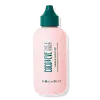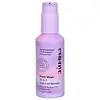What's inside
What's inside
 Key Ingredients
Key Ingredients

No key ingredients
 Benefits
Benefits

 Concerns
Concerns

 Ingredients Side-by-side
Ingredients Side-by-side

Cyclopentasiloxane
EmollientDimethiconol
EmollientC15-19 Alkane
SolventCocos Nucifera Oil
MaskingParfum
MaskingOpuntia Ficus-Indica Extract
Skin ConditioningCarica Papaya Seed Oil
HumectantFicus Carica Fruit Extract
HumectantCarthamus Tinctorius Seed Oil
MaskingCitrus Medica Limonum Peel Extract
EmollientGarcinia Mangostana Fruit Extract
Skin ConditioningC10-18 Triglycerides
EmollientSodium Hyaluronate
HumectantTriolein
Skin ConditioningTocopheryl Acetate
AntioxidantGlyceryl Dioleate
EmollientBenzyl Salicylate
PerfumingLinalool
PerfumingCoumarin
PerfumingLimonene
PerfumingHexyl Cinnamal
PerfumingCyclopentasiloxane, Dimethiconol, C15-19 Alkane, Cocos Nucifera Oil, Parfum, Opuntia Ficus-Indica Extract, Carica Papaya Seed Oil, Ficus Carica Fruit Extract, Carthamus Tinctorius Seed Oil, Citrus Medica Limonum Peel Extract, Garcinia Mangostana Fruit Extract, C10-18 Triglycerides, Sodium Hyaluronate, Triolein, Tocopheryl Acetate, Glyceryl Dioleate, Benzyl Salicylate, Linalool, Coumarin, Limonene, Hexyl Cinnamal
Water
Skin ConditioningHydrolyzed Soy Protein
HumectantStearyl Alcohol
EmollientBehentrimonium Methosulfate
Cetearyl Alcohol
EmollientCetyl Alcohol
EmollientArgania Spinosa Kernel Oil
EmollientHydrolyzed Vegetable Protein
Skin ConditioningAdansonia Digitata Seed Oil
EmollientPrunus Amygdalus Dulcis Oil
Skin ConditioningCocos Nucifera Oil
MaskingRicinus Communis Seed Oil
MaskingAloe Barbadensis Leaf Juice
Skin ConditioningPanthenol
Skin ConditioningHydrogenated Castor Oil/Sebacic Acid Copolymer
EmollientPolyquaternium-6
Hydroxypropyl Guar
Emulsion StabilisingGuar Hydroxypropyltrimonium Chloride
Skin ConditioningDimethicone
EmollientBenzoic Acid
MaskingDehydroacetic Acid
PreservativePhenoxyethanol
PreservativeParfum
MaskingWater, Hydrolyzed Soy Protein, Stearyl Alcohol, Behentrimonium Methosulfate, Cetearyl Alcohol, Cetyl Alcohol, Argania Spinosa Kernel Oil, Hydrolyzed Vegetable Protein, Adansonia Digitata Seed Oil, Prunus Amygdalus Dulcis Oil, Cocos Nucifera Oil, Ricinus Communis Seed Oil, Aloe Barbadensis Leaf Juice, Panthenol, Hydrogenated Castor Oil/Sebacic Acid Copolymer, Polyquaternium-6, Hydroxypropyl Guar, Guar Hydroxypropyltrimonium Chloride, Dimethicone, Benzoic Acid, Dehydroacetic Acid, Phenoxyethanol, Parfum
 Reviews
Reviews

Alternatives
Ingredients Explained
These ingredients are found in both products.
Ingredients higher up in an ingredient list are typically present in a larger amount.
Cocos Nucifera Oil is obtained from the kernels of the coconut fruit. In other words, this is coconut oil.
Coconut Oil is rich in fatty acids with lauric acid making up the majority of these. It also contains linoleic acid. Due to this high fatty acid content, coconut oil helps trap moisture and soften skin.
Despite being antibacterial, coconut oil may not be great for acne-prone skin. It is comedogenic and may clog pores. This ingredient may not be safe for malassezia or fungal acne.
Note: Coconut Oil should not replace your sunscreen for UV protection. Studies show it only blocks about 20% of UV.
This oil is non-volatile and has a light scent.
The term 'fragrance' is not regulated in many countries. In many cases, it is up to the brand to define this term. For instance, many brands choose to label themselves as "fragrance-free" because they are not using synthetic fragrances. However, their products may still contain ingredients such as essential oils that are considered a fragrance.
Learn more about Cocos Nucifera OilParfum is a catch-all term for an ingredient or more that is used to give a scent to products.
Also called "fragrance", this ingredient can be a blend of hundreds of chemicals or plant oils. This means every product with "fragrance" or "parfum" in the ingredients list is a different mixture.
For instance, Habanolide is a proprietary trade name for a specific aroma chemical. When used as a fragrance ingredient in cosmetics, most aroma chemicals fall under the broad labeling category of “FRAGRANCE” or “PARFUM” according to EU and US regulations.
The term 'parfum' or 'fragrance' is not regulated in many countries. In many cases, it is up to the brand to define this term.
For instance, many brands choose to label themselves as "fragrance-free" because they are not using synthetic fragrances. However, their products may still contain ingredients such as essential oils that are considered a fragrance by INCI standards.
One example is Calendula flower extract. Calendula is an essential oil that still imparts a scent or 'fragrance'.
Depending on the blend, the ingredients in the mixture can cause allergies and sensitivities on the skin. Some ingredients that are known EU allergens include linalool and citronellol.
Parfum can also be used to mask or cover an unpleasant scent.
The bottom line is: not all fragrances/parfum/ingredients are created equally. If you are worried about fragrances, we recommend taking a closer look at an ingredient. And of course, we always recommend speaking with a professional.
Learn more about Parfum